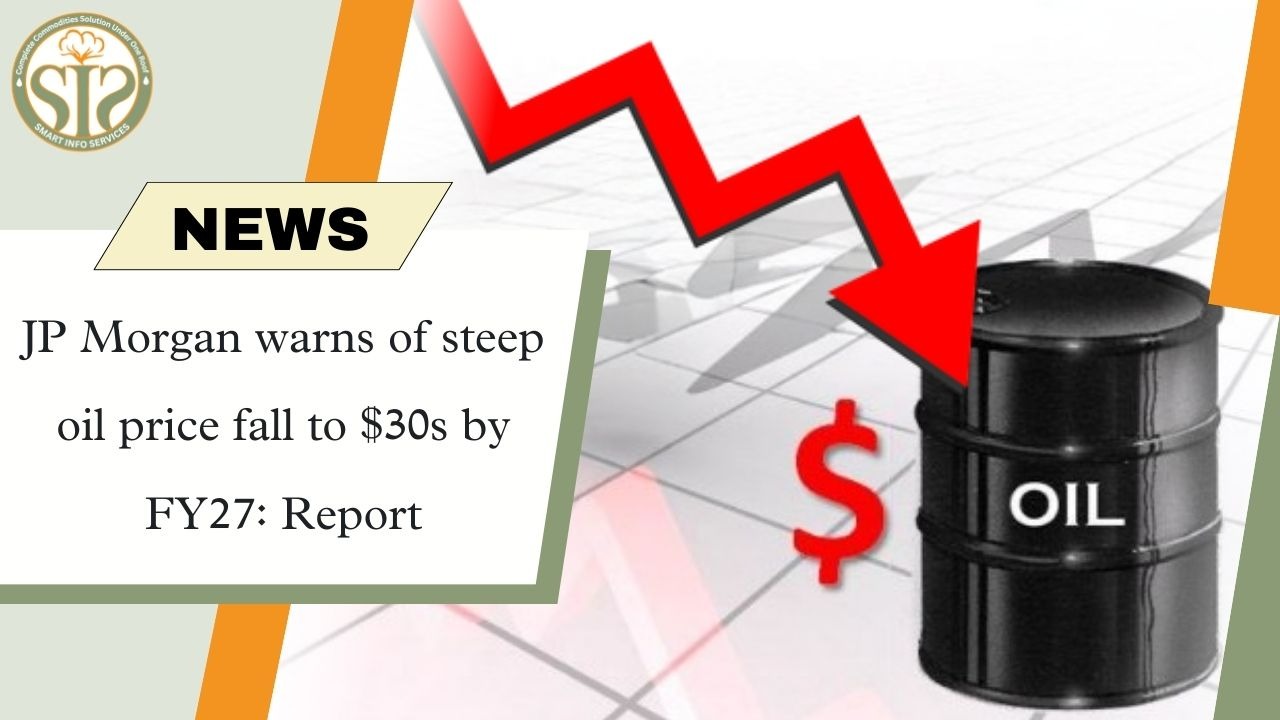
JP Morgan warns of steep oil price fall to $30s by FY27: Report
If realised, such a correction would offer meaningful relief for India, where oil imports weigh heavily on macro stability
JP Morgan has issued a striking forecast on global energy markets, with The Economic Times reporting that the investment bank sees Brent crude potentially slipping into the $30 range by the end of FY27.
The projection is built on expectations of a widening supply glut that continues to outpace demand growth through the next three years.
If realised, such a correction would offer meaningful relief for India, where oil imports weigh heavily on macro stability.
The Economic Times notes that global oil demand is set to rise by 0.9 mbd in 2025, lifting total consumption to 105.5 mbd. Demand growth is likely to remain steady in 2026 and pick up to 1.2 mbd in 2027. However, JP Morgan's estimates suggest supply will expand almost three times faster than demand in both 2025 and 2026. Even though supply growth eases in 2027, it is still expected to exceed what the market can comfortably absorb.
A key driver behind this mismatch is the renewed strength of non-OPEC+ output. As highlighted by The Economic Times, JP Morgan believes that half of the incremental supply through 2027 will originate outside the producer alliance, supported by strong offshore projects and persistent momentum in global shale. Offshore, once dismissed as an expensive and cyclical business, has evolved into a dependable, low-cost growth stream. It is projected to contribute 0.5 mbd in 2025, 0.9 mbd in 2026 and a further 0.4 mbd in 2027. With almost all FPSOs through 2029 already in place, the bank sees exceptionally high visibility on upcoming offshore additions.
Shale oil remains the system's most responsive supply lever. Though US shale growth has cooled, productivity gains and better capital efficiency continue to bolster output. Beyond the US, Argentina's Vaca Muerta has matured into a cost-competitive, scalable basin backed by expanding export capacity. As reported by The Economic Times, global shale output increased by 0.8 mbd in 2025, and if crude remains in the mid-$50 band, shale supply could rise another 0.4 mbd in 2026 and 0.5 mbd in 2027.
These additions have contributed to a sizeable inventory build-up. The Economic Times cites JP Morgan's assessment that global observable stocks have risen by 1.5 mbd so far this year, with nearly 1 mbd located in oil-on-water and Chinese inventories. The bank expects this accumulated surplus to spill over into 2026, potentially widening the glut to 2.8 mbd in 2026 and 2.7 mbd in 2027 without corrective action.
Such an overhang, The Economic Times reports, implies Brent could slip below $60 next year, drift into the low $50s by late 2026, and end that year with prices showing a $4 handle. For 2027, JP Morgan projects an average of around $42, with the possibility of prices falling into the $30s by the close of the fiscal year. While the bank acknowledges that the full downside may not materialise, it expects market balancing to occur primarily through voluntary and forced production cuts. JP Morgan's working forecast for Brent in 2026 stands at $58, while current Brent prices hover just above $60 per barrel.
read more :- High Court seeks response from CCI on lack of cotton centres in Vidarbha